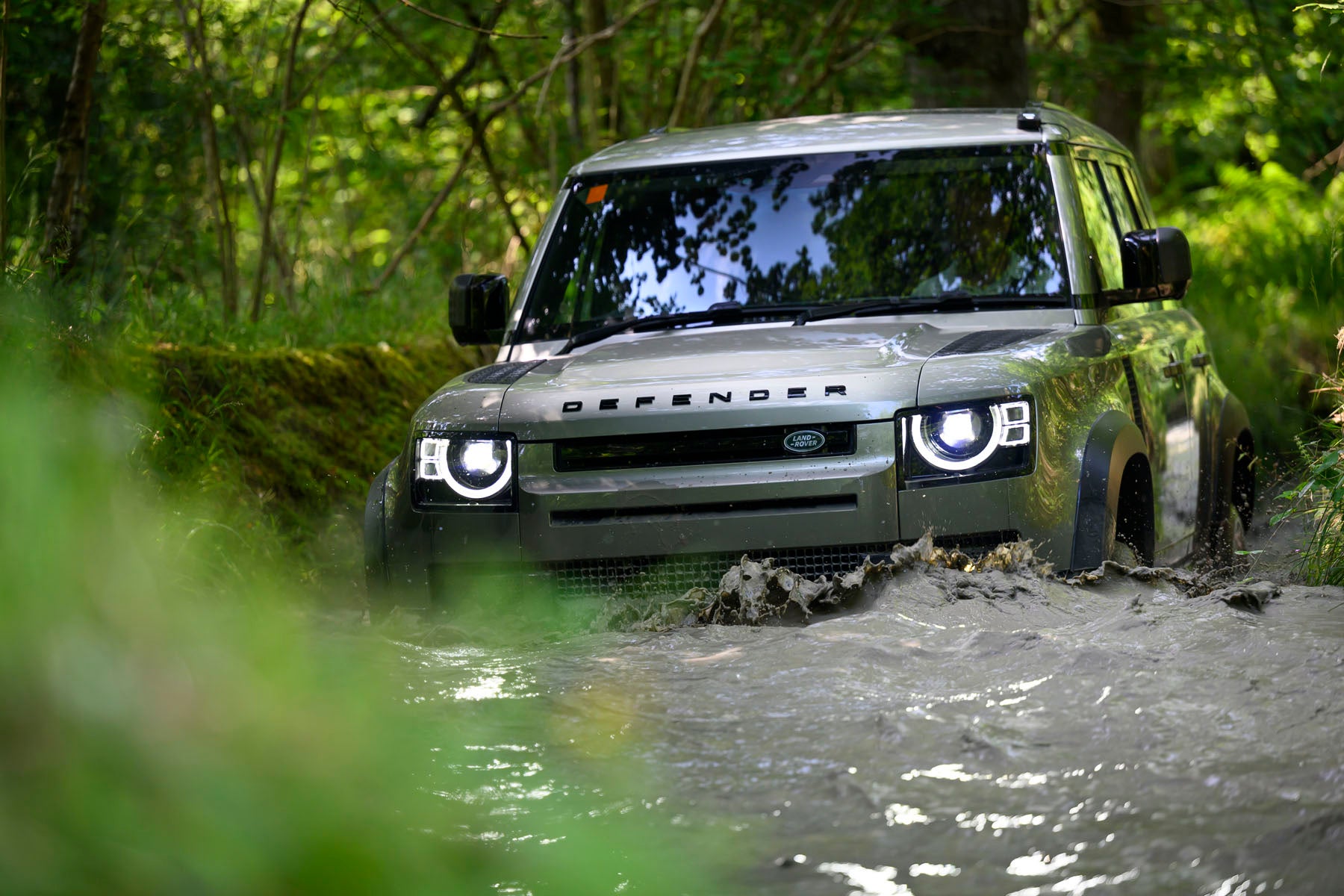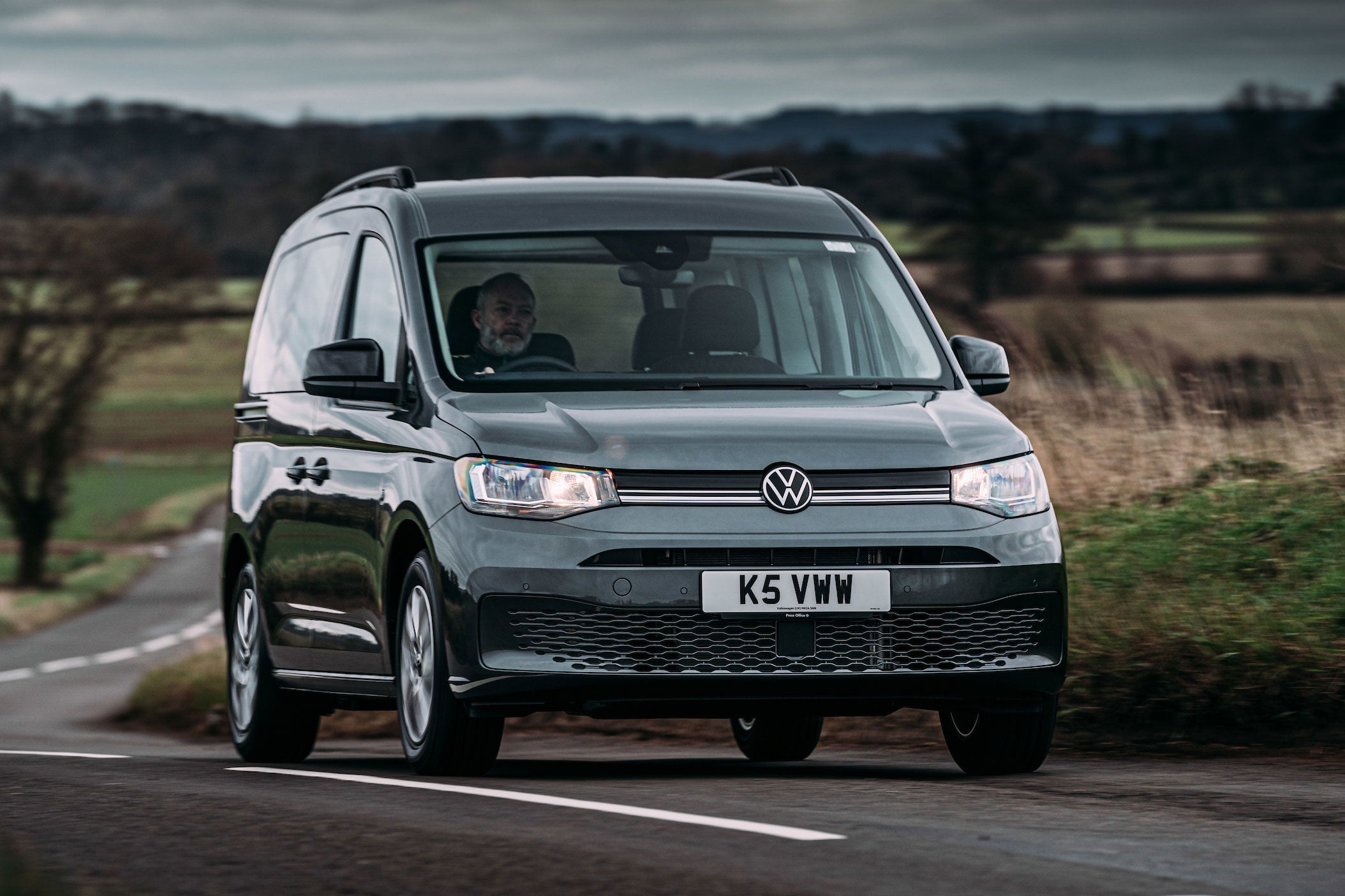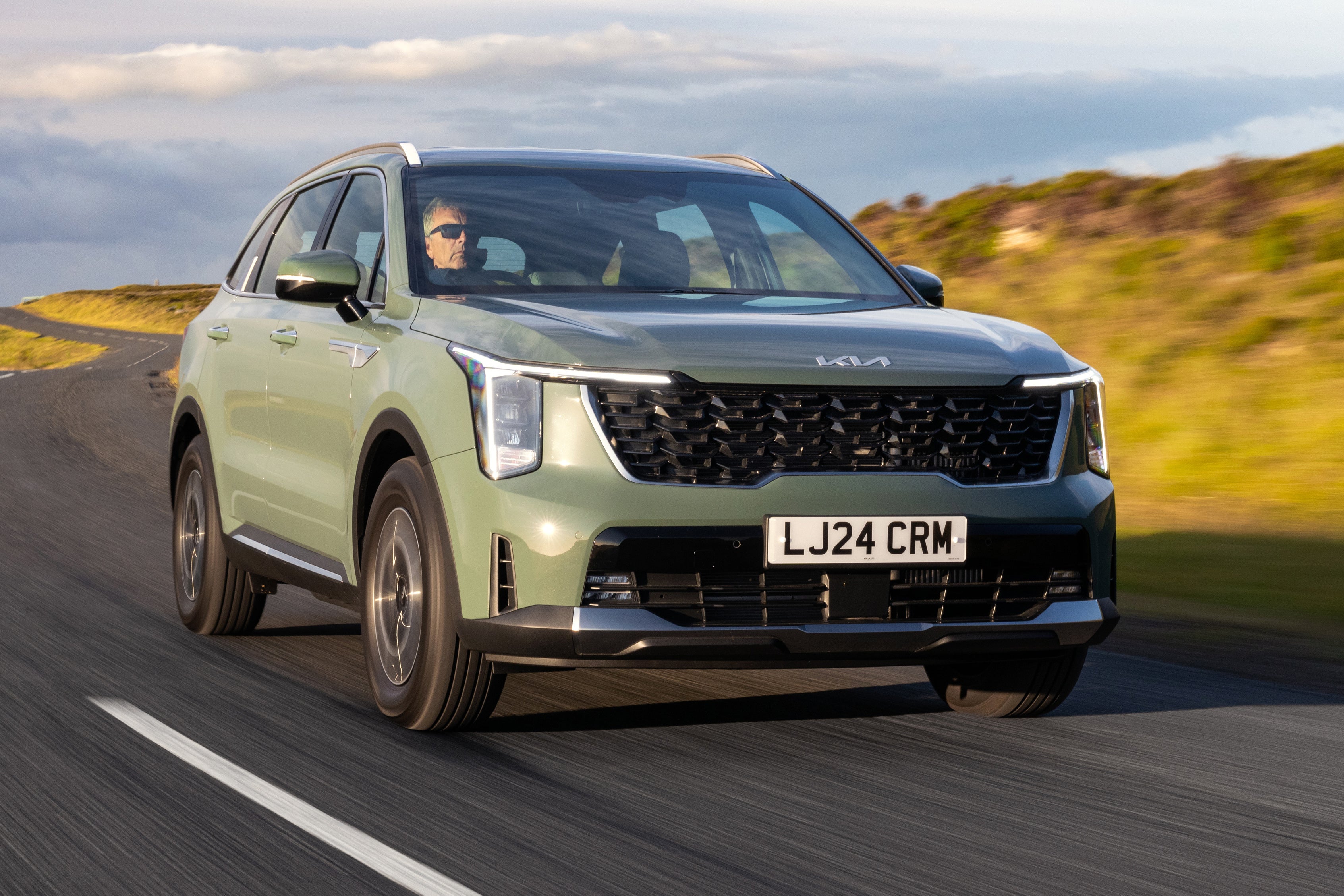
If you're a passionate surfer, you'll need to think carefully when choosing your next vehicle. To make life easier, we've put together this list of the best cars for surfers.
It isn’t an exaggeration to say that plenty of surfers choose their vehicles based on the length of their surfboards, especially longboards, which can be over 8ft long.
Happily, there are plenty of options out there, including estate cars, vans, pick-up trucks and even a little city car. Yes, really.
Best cars for surfers in 2025
1. Skoda Superb Estate
Year launched: 2024

We're kicking things off not just with an estate car, but probably the best around right now. The aptly named Skoda Superb Estate has a massive 690 litres of boot space, which is 30 litres up on the already cavernous load area in the previous-generation one, and 120 litres ahead of what's offered by the BMW 5 Series Touring.
The caveat for the Superb and any other estate is that larger boards will likely need to go on the roof. With the rear seat bench stowed you have around two metres (6.5 feet) of load space up to the back of the first row of seats, although you should be able to fit a board longer than that by loading it diagonally.
The latest version is the first Superb to be offered with plug-in hybrid powertrains, so depending on how far away you are from the coast, you could be able to cruise silently down to beach and back on electricity alone. If preferred, there's a healthy range of petrol and diesel options as well.
2. Dacia Jogger
Year launched: 2021

With a starting price comfortably under £19,000, the Dacia Jogger is the cheapest seven-seater by far right now. For whenever you don't need to carry around so many people and are more concerned with transporting, say, surfboards, it's easy to take out the two third-row seats and fold down the second.
Doing so gives a similar load length to the Skoda Superb, so you'll have the same limitations in terms of board size. Should you need to take a board or two on the roof, though, it'll be easy to attach a carrier thanks to the standard-fit modular roof bar system.
Compromises are necessary to achieve that low price, though. It's not the most refined thing, and it will feel quite bargain basement inside compared to more expensive estates. But if you don't mind missing out on a bit of luxury, this is a great way to save money on a practical wagon.
3. Ford Transit Custom
Year launched: 2024

The Ford Transit Custom is one of the UK’s most popular medium-sized vans because it’s practical, cheap to run, and great to drive. There’s also a wide selection of different versions available to choose from, so there’s likely to be one that suits your needs, even on the used market. Being a van, you can also choose from different heights, wheelbase versions, plus single, crew, and kombi cabs. Oh, and there's even the 'Nugget' campervan version that sleeps four.
The standard-length panel van model is 4.97m long, while the longer models are 5.34m, with the tallest and longest providing up to 8.3 cubic metres of interior load space. With the optional load-through bulkhead, you can easily store longer items - like surfboards - up to 3.4m/11.2ft in length inside the front part of the cabin. The Transit Custom provides a fantastic level of interior quality and plenty of storage, such as big door bins and coat hooks.
The current, second-generation Transit Custom arrived in 2023. It's available with a 2.0-litre diesel engine, as before, but also a plug-in hybrid and as a fully electric van in the form of the excellent E-Transit Connect.
4. Honda Jazz
Year launched: 2020

A brand-new Honda Jazz hit the streets in 2020, but the previous generation is one of the most versatile hatchbacks going. Not only are used models for sale at very affordable prices, but they're also in much better condition than the equivalent Ford Fiesta (thanks largely to the Jazz's more mature audience).
Joining Club Jazz means you get Honda's legendary ‘magic seats’ - these can be easily flipped up and locked in place for carrying oddly-shaped items. The load space is 354 litres with the rear seats in place or 1314 litres with the back seats folded. It’s also possible to fold the front passenger seat, meaning items like planks or a smaller surfboard will fit. To be honest, if your budget won’t stretch to an estate or van, the Jazz is definitely worth a look. The space offered is simply bonkers for a car this size.
On the downside, the engines aren’t turbocharged, so they feel a bit underpowered. But, 2018-onwards models get a 1.5-litre petrol engine in Sport trim. On the road, the Jazz is a well-balanced car, blending ride comfort, secure handling and impressive refinement. Practicality is good, too, with three- and five-door options available. While it isn’t the most exciting small car, the Jazz will cope perfectly with your surfing gear (as long as you don’t want to carry a whole lot of other stuff, too).
5. Volkswagen Multivan
Year launched: 2021

Like the idea of a practical van, but don't actually want a van? You want a Multivan. Yes, it still has 'van' in the name, but the Volkswagen Multivan technically isn't one. It's based on the same car platform as things like the Golf, and that means it's far more refined to drive than a van-based MPVs.
You aren't really losing out on practicality as a consequence. The Multivan accommodates up to seven with individually sliding seats, many of which can be removed entirely. And so, you could take out all the seats along one side and have plenty of room for boards, while still being able to take three passengers.
There's 2.4 metres of loadspace behind the first row of seats in the shorter Multivan, and just over 2.6 metres in the longer version, so even longboard should fit without issue. It's not cheap, though, with prices starting at nearly £50,000 for an entry-level short wheelbase 2.0-litre TDI Life and rising to £67,000 for a long wheelbase 2.0-litre TSI Style. If you want a two-tone paint finish (which, of course, you do) that's an extra £3,000 on top.
6. Suzuki Jimny
Year launched: 2019

The Suzuki Jimny is a flawed car, but it’s really, really hard not to love it anyway. For surfers, the bright colour options and surfboard-specific carrying rack will make it a unique choice. But you won’t fit your family in it with any room left for luggage, while the driving experience is more akin to a classic off-roader, ping-ponging down the road with all the precision of a drunk goose.
Used models aren’t quite as pricey as the larger old-school Land Rover Defender, but they still cost more than you might expect because Suzuki only sold a few passenger versions in the first place. It was on sale as a two-seater commercial vehicle for a bit, for emissions reasons, but it's since been killed off for good.
But if you’re keen, there are plenty of used models available and you should be able to get most of your money back when you’ve had enough of it. The 1.5-litre 101PS petrol engine is the only option, and it’s about as underpowered as it sounds. In fact, it’s much better around town than on the motorway because it isn’t very refined, either, although it is an accomplished off-roader.
If you opt for a Jimny, you'll be travelling light because the boot space is dire. In fact, it offers the same amount of space as a Kia Picanto city car. While it’s easy to get charmed by the Jimny’s cutesy appearance, it takes a sense of humour and surprising levels of commitment to drive a Jimny every day. But if you fancy the challenge, the Suzuki Jimny is a cult classic that might even appreciate in value...
7. Ford Ranger
Year launched: 2011

Pick-up trucks are generally very versatile beasts for outdoor pursuits, but for surfing, the Ford Ranger might just be the best of them. That's because the latest version is available with the clever Flexible Rack System, which can be locked in one of five positions, providing an ideal mounting point for multiple sizes of surfboard.
It's a £1,600 option, but one that's well worth ticking on the configurator, because it has myriad uses beyond carting your board to the coast at the weekend. It'd be great for carrying long bits of timber, for example, or a ladder. And before you ask, no, you can't have the Flexible Rack setup on a Volkswagen Amarok, even though it's now based on the Ranger.
Sadly, you can't spec on the Ranger Raptor either, but we'll let that slide, as the rest of the Ranger, erm, range is very strong. You can even have one as a plug-in hybrid now, although we still think the 205PS, 2.0-litre diesel engine is the best option.
8. Volkswagen California
Year launched: 2024

The Volkswagen California is an expensive choice, but we couldn’t make a list of the best cars for surfers without including a campervan. After all, what could be better than waking up right next to the beach, ready to catch some morning waves before the crowds arrive?
Reinforcing this further, the California even has derivatives with names that'll get you in the mood for a trip seaside – Beach, Coast and Ocean. Indeed, the previous-generation Cali was even available as a 'Surf', although that model was more about giving you a bit more equipment than the entry-level version rather than anything to do with its surfboard carrying capability.
On that front, you might need to do a bit of research to find out what other California owners are doing to carry their boards, but given how much space there is inside these things, we're sure you'll figure something out.
On the subject of space, there's now more of that, with the latest California being based on the Multivan MPV we were talking about earlier, rather than a Transporter panel van. You also get twin sliding doors and the option of a plug-in hybrid powertrain, both of which are California firsts.
9. Hyundai Inster
Year launched: 2025

You might think our senses have taken a leave of absence here, but stick with us. Much like the Honda Jazz mentioned a little further up, the Hyundai Inster packs a whole lot of practicality into its diminutive frame. As well as having a folding and sliding rear bench, the two front seats can fold fully flat.
You could, then, fold both to turn the Inster into a tiny, makeshift camper. Or, you could just fold the passenger side, making room for a surfboard. The caveat here is that it'll need to be a smaller one, with the Inster's load length coming up about 40cm short of the Jazz's.
The Inster does come with roof rails as standard, though. With the accessory crossbars in place and a surfboard holder from a third party, you could easily take a board on the roof, which on an Inster would look pretty damn cool, we think. You'd be the envy of the seafront car park.
10. Peugeot Rifter
Year launched: 2018

The Peugeot Rifter is a van-based MPV that majors on practicality - available with five or seven seats - and featuring a low, flat floor that makes it easy to fold seats away to store heavy luggage. Practicality includes twin sliding doors and three separate full-sized centre row seats, which fold into the floor. A folding passenger seat also allows long items - like surfboards - inside to a length of 2700mm in the short version or 3050mm in the long.
Peugeot’s MPV is packed with modern kit and all versions are available with touchscreen infotainment, blind-spot warning, adaptive cruise control and Peugeot's excellent digital i-Cockpit system. However, it hasn’t got the flair of the Peugeot 3008 by any means. It also doesn’t boast much refinement, with a lot of wind and engine noise on the motorway due to an underpowered engine range.
Economy is good for both the 1.2 petrol and 1.5 diesel engines, and we could argue that the low price and huge interior mean it’s arguably a better family car than any SUV or crossover at the same price point, but the lack of premium feel, refinement, style and performance means that only those who really want ultimate practicality will opt for the Peugeot Rifter.
Just bear in mind if you want a new one, it'll have to be electric, with the E-Rifter now the only version available. You can still get the closely related Citroen Berlingo MPV with an engine, but the current version has a bulkhead fitted behind the front row of seats, which has various ramifications, including the tax you'll pay on it.
Unless you live a few miles from the beach or can afford to surf regularly, the best option will be a car that can cope with the chores of daily life (shopping trips, school runs, commuting etc) as well as fitting a surfboard inside or on a roof rack. It's hard to fault a Volkswagen California - but it's an expensive choice.
Hatchbacks or older estates will be cheaper to buy and run than vans will be, and they’re likely to have lived an easier life with less miles covered as well. Hatchbacks will be too small for some people, so if you can stretch to a rugged estate then the Skoda Octavia Estate 4x4 would be a very good choice. Long-term, the Toyota Prius will cost the least to run.
In terms of fun, but perhaps not the most practical, options - it would probably be the Suzuki Jimny. As long as your definition of fun is piloting a drunk goose along a B-road.
Find a Skoda Superb Estate for sale
Skoda Superb Estate1.4 TSI iV Sport Line Plus DSG 5dr
202190,745 milesHybrid£347 mo£15,995
BD21AZSkoda Superb Estate2.0 TSI 280 Laurin + Klement 4x4 5dr DSG
202353,778 milesPetrol£440 mo£27,900
GU124NUSkoda Superb Estate2.0 TDI CR 190 SE L 5dr DSG
202067,579 milesDiesel£269 mo£16,818
WF27AWSkoda Superb Estate2.0 TDI CR 200 Laurin + Klement 5dr DSG
202222,500 milesDiesel£397 mo£27,495
S63BLSkoda Superb Estate2.0 TDI CR SE L 5dr DSG
202316,000 milesDiesel£354 mo£24,991
HD16NASkoda Superb Estate1.5 TSI SE Technology 5dr DSG
202240,628 milesPetrol£279 moor £18,000£19,222
£1,222 offS61TFSkoda Superb Estate2.0 TDI CR SE 5dr DSG
202334,251 milesDiesel£353 mo£23,734
PL71RFSkoda Superb Estate1.5 TSI e-TEC SE L 5dr DSG
20256,000 milesHybrid£399 mo£30,957
CB41SR
More family car guides
Whether you're looking for advice on what family car to buy or looking to find your next family car, we've got the answer


